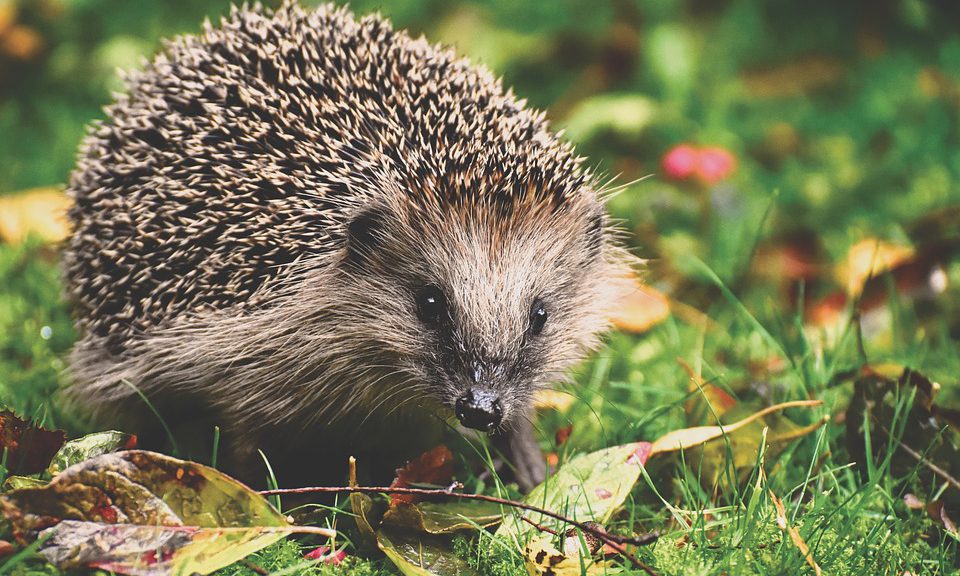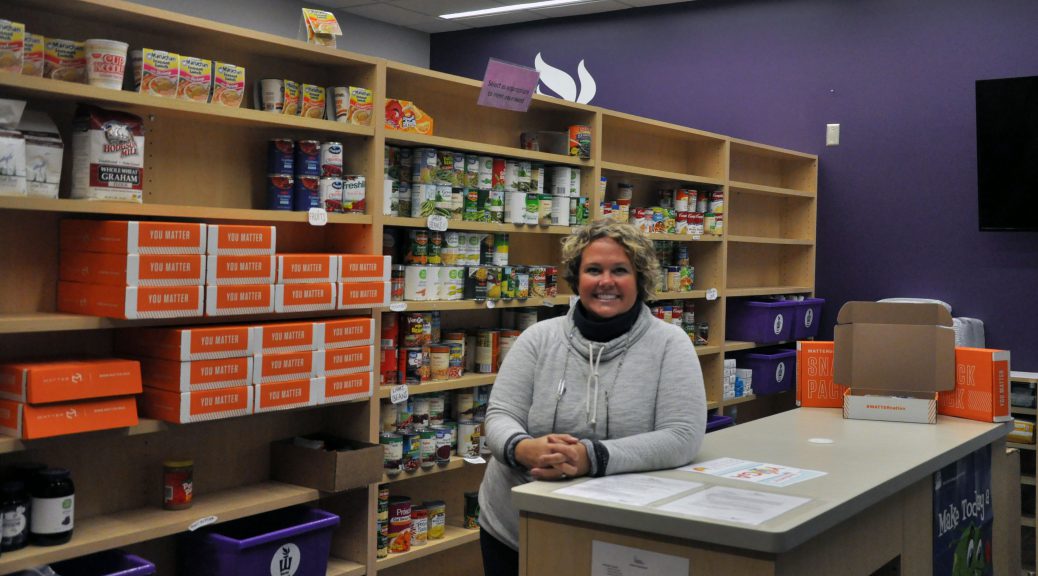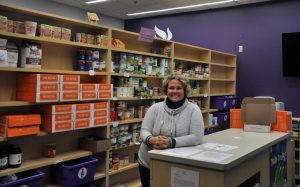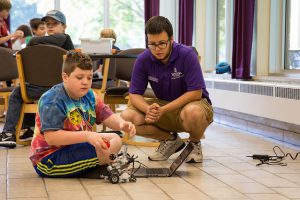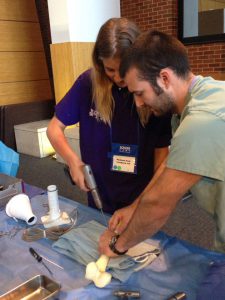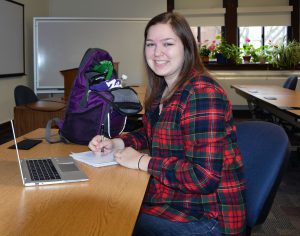By Erin Jones
“You’re going to regret those tattoos someday.”
“Did your tattoos hurt?”
“You’ll never get a job with those tattoos.”
“What do your tattoos mean?”
Ahem, cue the eye roll, please.
And people say there’s no such thing as a stupid question.
OK, OK, so maybe they aren’t stupid questions, but they’re annoying to me nonetheless.
But it’s not just the intrusive questions and comments about my tattoos that are frustrating to me.
The line was crossed this past summer when I worked in the cosmetics department at Herberger’s.
I was helping a woman who asked to test a makeup color on my skin, which I thought was odd considering I wasn’t the one who was going to be wearing it.
Before waiting for my response, she grabbed my arm rudely and applied the color to my wrist.
She twisted my arm around awkwardly for a minute and finally decided against the color.
Just when I thought I was done being this woman’s Barbie doll, she pulled my arm back again.
“Your tattoos are beautiful,” she said, peering closely at the seahorse on my forearm. “I love them.”
“Thanks?” I said, trying to be as polite as possible while tugging my arm out of her grip.
Eventually she left, but even after she was gone I felt uncomfortable.
The incident reminded me of the other times that people had asked invasive questions and made unnecessary comments about my tattoos.
And it’s not just one or two of my tattoos that receive unwanted comments. It’s all 20 of them, and being asked feels more like an interrogation for a crime I didn’t commit.
“Those tattoos are going to look bad when you’re old.”
“How are you going to hide those on your wedding day?”
“Boys don’t like girls with tattoos.”
“Do you have any tattoos in hidden places?”
I started to wonder if there was anyone else who had the same cringy feelings I did when asked about their ink.
Turns out, I was right. After getting in contact with someone with similar experiences, we were able to talk out our frustrations together.
Rachel Carter, who is from La Crosse, Wisconsin, and is a Winona State University graduate, has her own collection of tattoos and talked about the uneasiness she feels when asked about her body art, particularly her Doctor Who tattoos.
“All of my tattoos have really deep, significant meaning to me,” Carter explained. “I’m a military sexual trauma survivor, so there’s a lot of trauma and personal history. Things that I’ve accomplished and overcome.”
Carter also said that some people continue to ask her questions about her tattoos, even when she’s expressed that she doesn’t want to share their meaning.
“I’ve had people who I don’t really know, or maybe I’m in a situation where I don’t really want to talk about it, say, ‘Cool, tell me about your tattoos,’” Carter said. “I’ll tell them they have really deep meaning to me, but they’ll just keep wanting me to tell them more when I don’t want to talk about it, but they feel like they have a right to know.”
In addition, Carter told me she’s also had an experience like mine, when she was touched by a person she didn’t know.
“I’ve been at the YMCA working out and I stopped to talk to a friend and somebody passed by and was like, ‘Oh, I really like your tattoos!’ and then stroked my arm because I have a full sleeve on my arm, very caressing, like you would think a spouse or a significant other would, and then just walked away,” Carter said.
We pondered for a few minutes, but neither of us could figure out why a perfect stranger would think it’s OK to touch another person without permission.
“I don’t know if it’s because they think, ‘Oh, people have tattooed your arms, so you must be fine with being touched’ or ‘Your tattoos are on display, so you must be fine with people asking,’” Carter said.
And yet, it’s not fine. People still grab your arm to get a closer look or ask questions and make comments that aren’t really necessary.
But for me, it’s not the strangers who do these things that bother me the most. It’s my family’s comments that get on my nerves more than anything else.
For my dad, Jeff Jones, his comments mostly concern professionalism and the ability to get a job after finishing college.
He added that in his career, he hasn’t met any professionals who are covered head-to-toe in tattoos.
“Most of the people I work with are old white guys and ladies,” my dad said. “In the corporate world, most of the people I refer to are managers, directors, vice presidents and junior vice presidents who make a lot of money and as far as I know, they don’t have any tattoos.”
Despite saying this, my dad did recognize that in certain careers, tattoos don’t seem to matter much.
“Look at professional athletes. A lot of them have tattoos,” my dad said. “They have a career for 10 or 15 years, so they don’t have to go out with their resume and find another job. It all depends on the profession.”
When I asked if he worried about me finding a job after college, surprisingly, he said he wasn’t too concerned.
“No, you’re smart, you’ll be fine,” my dad said. “As long as you don’t get any on your face or your neck or your chest or wherever.”
Lucky for him, I don’t have plans to get any of those places tattooed; however, I told him that the 20 I’ve gotten so far aren’t going anywhere.
He surprised me again by saying that he doesn’t mind the ones I have now. Well, most of them.
“[Your tattoos are] good,” my dad said. “I’m not sure about the gummy bear one. That one’s a little weird. And the Star Wars one, that one’s kind of weird too. But if you get a tattoo that means something to you, I’m not going to argue with that.”
Thanks, dad. After hearing the tattoo lecture 20 times, I’m kind of over it. And so is he. I’m glad we can finally sort of agree on the tattoo thing.
Now to get him on board with piercings. He is not much of a fan.
“Tattoos are tattoos, but what I don’t understand is people who put those big gauges in their ears. I definitely don’t want you doing something like that,” my dad said. “Hell no, I frickin’ can’t stand [gauges]. I’d rather have you get tattoos than put gauges in your ears or frickin’ things stickin’ out of your nose – That just looks stupid.”
Erin Jones is the former copy editor for Winona State University’s student-run newspaper, The Winonan. She expects to graduate in May 2019. Before being copy editor, she was one of The Winonan’s news reporters. Jones is majoring in mass communication-journalism and minoring in criminal justice. After graduation, she hopes to find a career in which she can use both her major and minor. She is also interested in being a feature writer or an editor for a magazine.
